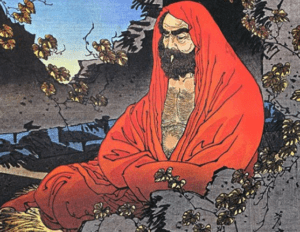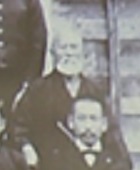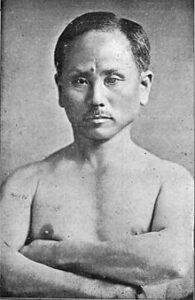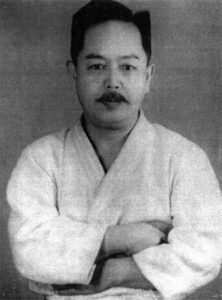Karate, a martial art that has captured the imaginations of millions worldwide, has a rich history that dates back centuries. Originating in the ancient civilizations of China before finding their way to the Okinawa islands of Japan, Karate has evolved through cultural exchanges, invasions, and the indomitable spirit of its practitioners. In this article, I delve into the captivating journey of Karate, tracing its roots, exploring its development, highlighting its global impact, and busting a myth.
Ancient China and the Birth of Martial Arts.

The origins of Karate can be traced back to ancient China, where the practice of martial arts was deeply ingrained in the culture.
According to legend, one notable figure linked to the early development of martial arts and Shaolin Kung Fu is Bodhidharma, a Buddhist monk who journeyed from India to China in the 6th century. Bodhidharma’s teachings encompassed physical exercises aimed at bolstering strength and fostering spiritual well-being, ultimately leaving a lasting imprint on the evolution of martial arts in China.
Note: If you enjoyed the legend of Bodhidharma’s participation in the development of Shaolin Kung Fu, you may want to skip this myth-buster article Bodhidharma and martial arts.
The Exchange with Okinawa.
During the Ryukyu Kingdom era (14th to 19th century), Okinawa, an island situated between China and Japan, became a hub of cultural exchange. It was through this exchange that Chinese martial arts, including the Shaolin-derived systems, were introduced to Okinawa. The exchange of officials between the countries was instrumental in the transfer of Chinese martial arts to Okinawa. A well-known martial artist is the Chinese military attaché Kwang Shang Fu (Kusanku).
The Ryukyu Kingdom and Te.
Okinawa had a lokal style called Tegumi. It is believed that the lokal fighting art of Okinawa merged with the Chinese martial arts. It came to be known as “Te” or “Ti,” these combat techniques were primarily focused on self-defense and were passed down through generations. The exact nature of Te during this time is subject to debate, as historical records are limited. However, it laid the foundation for what would later develop into Karate.
The Modernization of Karate.

Karate continued to evolve throughout the 19th and 20th centuries, with various practitioners refining and systematizing its techniques. An important figure in the modernization of Karate was Anko Itosu, who introduced Karate to Okinawan schools in the late 19th century. Itosu adapted the art to make it more suitable for physical education, thus increasing its popularity among young students.
The Spread of Karate to Japan.

Gichin Funakoshi is most often credited as the person who introduced Karate to Japan, but it is important to note that Kenwa Mabuni, another renowned Okinawan martial artist, also had a significant influence in establishing Karate in Japan. Kenwa Mabuni, the founder of Shito-Ryu style, played a pivotal role in popularizing and spreading Karate on the mainland of Japan.

In 1928, Mabuni traveled to Japan with the aim of introducing Karate to a wider audience. His efforts were instrumental in contributing to the popularization and acceptance of Karate in Japan. During his time in Japan, Mabuni conducted numerous demonstrations and taught Karate in universities, schools, and police academies. These activities not only showcased the effectiveness of Karate as a martial art but also helped familiarize the Japanese population with its techniques and principles. Mabuni’s teachings and demonstrations had a significant impact on the growth and acceptance of Karate in Japan during that period.
While Gichin Funakoshi is often credited as the primary figure in Karate’s introduction to Japan, it is important to recognize Kenwa Mabuni’s substantial contributions. Both Funakoshi and Mabuni played significant roles in establishing Karate in Japan, and their efforts collectively helped pave the way for the development and recognition of Karate as a respected martial art in the country.
The Development of Modern Karate Styles.
As Karate gained recognition and popularity, various practitioners and masters emerged, each contributing their own unique approaches and techniques. This led to the development of different Karate styles, such as Shotokan, Goju-Ryu, Wado-Ryu, and Shito-Ryu, among others. These styles showcase variations in stances, techniques, and training methodologies, reflecting the diverse interpretations and contributions to the art.
It is worth noting that the development of Karate styles is a complex and ongoing process. Over the years, different masters and organizations have further refined and evolved their respective styles, adding their own insights and modifications. This continuous evolution has contributed to the richness and diversity of Karate as a martial art.
The emergence of these various Karate styles has allowed practitioners to choose a style that aligns with their personal preferences and goals. Each style has its own unique characteristics, emphasizing different aspects of Karate training. For example, Shotokan Karate focuses on strong, linear movements and powerful strikes, while Goju-Ryu Karate places emphasis on circular movements and the harmonious blending of hard and soft techniques. Wado-Ryu Karate emphasizes fluidity and evasion, while Shito-Ryu Karate incorporates a combination of hard and soft techniques.
The diversity of Karate styles has also led to the formation of different organizations and associations dedicated to the promotion and preservation of specific styles. These organizations provide training, certifications, and opportunities for practitioners to compete and showcase their skills in tournaments and demonstrations. They also serve as custodians of the lineage and traditions associated with each style, ensuring its continued growth and development.
Throughout history, prominent masters have emerged within each Karate style, further shaping and influencing its evolution. These masters have passed down their knowledge and expertise to their students, who in turn have become influential figures in their own right. The contributions of these masters have deepened the understanding and technical proficiency of Karate as a martial art.
Thanks for reading.
Gert
